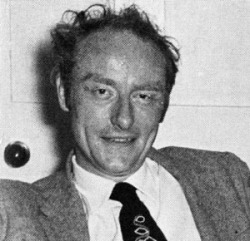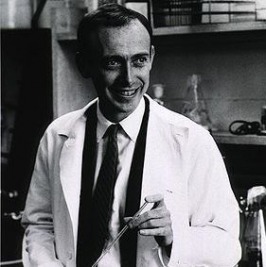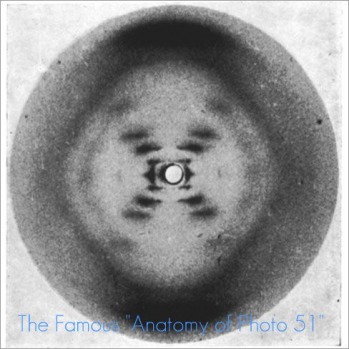The Main Discoverer's of DNA...
Francis Crick

This is Francis Crick who was one of discoverer's of DNA. He studied physics at University College, London, and obtained a B.Sc. Next, he went on to Cambridge and worked at the Strangeways Research Laboratory. After a year of working there he joined the Medical Research Council Unit.
James Watson

Being a smart student, Watson entered the University of Chicogo at the age of 15. Although, after graduating from the university, he was turned down by Harvard and CalTech for graduate studies. So rather than going to those, he went to Indiana with his Ph. D. in genetics, and began his "search for the gene."
Rosalind Franklin

At the age of 18, she was enrolled in Newnham College, Cambridge, and graduated from it 3 years later. She then held a graduate fellowship for a year but quite to work at the British Coal Utilization Research Association. Next, she spent 3 years in Paris at the Laboratoire Central des Services Chimiques de L'Etat, where she learned X-ray diffraction techniques. A year after being in Paris, she went back to England as a research associate in a labratory at King's College, London.
The DNA Discovery Story

Rosalind Franklin discovered that Signer's DNA X-ray patterns indicated 2 forms: alpha "a wet form" and beta "a drier form". Franklin's effort often included X-ray pictures that took over 100 hours of exposure and in the November of 1951 she obtained a pattern from the wet form, a stark X-array of black stripes radiating from the center Franklin presents the data on the "X" pattern at a colloquium, which Watson hears. She suggests that DNA is helical and Watson and Crick begin to build a model upon the "X" pattern. Franklin was asked to review the model, which she belittles and criticizes. The Director of Cavendish suggests Watson and Crick do no further model building.
In May of 1952 Franklin takes the famous photograph 51, [Anatomy of Photo 51] but sets it aside spending all her efforts on the dry form pictures that did not point as strongly toward a helix. In fact Franklin never formally published or reported on any of her X-ray photos. Conditions at King's had gotten so unsociable that Franklin decides to leave. The story gets murky here. "Someone" gives photo-51 to Watson, either Franklin herself, her lab assistant, Raymond Gosling, or Wilkin's showed him Franklin's photo 51 (some have called this unethical on Wilkins part). Watson immediately recognizes the significance of the "X" in photo-51; it means DNA is a helix with 10 units per turn (count the spots in the photo) with 34 Angstroms per turn. Watson sketches a copy of the photo on a newspaper and returns to Crick. Together they model the structure of DNA as a 2 chain helical, with anti-parallel properties and the bases facing inward paired to hold the molecule together. Within 2 months Watson and Crick published their model. On Saturday, February 28, 1953 it is reported that Crick came into the Eagle, a Cambridge pub, and announced to everyone there that they had "found the secret of life". Franklin, in fact, came to Cambridge to see their model, and readily accepts it.
